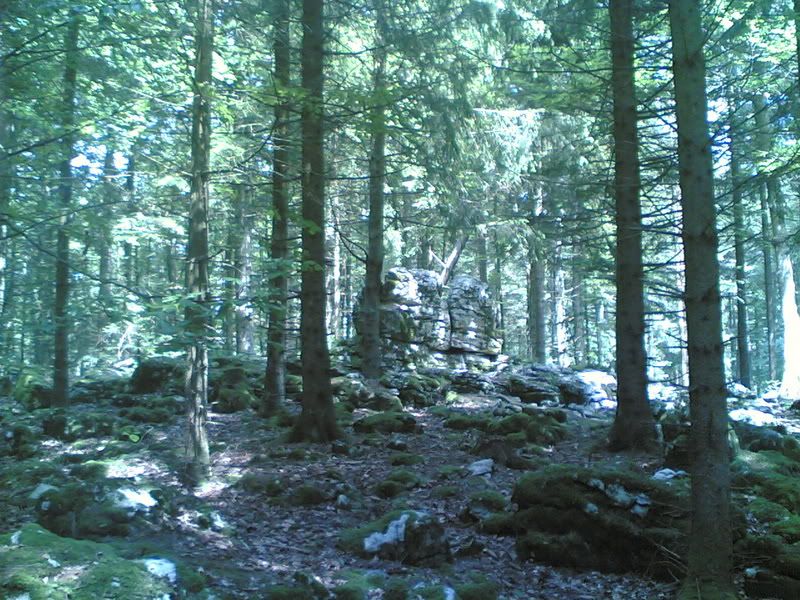I wanted to make an entirely separate von List entry to plug one publishing concern which seems to be working to translate his works, other than 'Secret of the Runes', into English. Of course, they have other similar endeavors as well.
Quality Literature With A Mission
The mission of Rûna-Raven goes beyond mere “book-selling”— the purpose of Rûna-Raven is transformative. Transformation occurs when knowledge is put into action. But for the changes to be strong and true, the knowledge must be accurate. Therefore, we constantly attempt to bring increasing amounts of the highest quality scholarship — exoteric and esoteric — to you.
Rûna-Raven strives to provide a knowledgeable reading public with the best material and most reliable service in a variety of “cutting edge” fields — with a concentration in the areas of Germanic lore and magic as well as left-hand path studies. Rûna-Raven's mission is to publish deeper level works in the Germanic tradition that larger and more commercial houses will not print.
The mission of Rûna-Raven goes beyond mere “book-selling”— the purpose of Rûna-Raven is transformative. Transformation occurs when knowledge is put into action. But for the changes to be strong and true, the knowledge must be accurate. Therefore, we constantly attempt to bring increasing amounts of the highest quality scholarship — exoteric and esoteric — to you.
Rûna-Raven strives to provide a knowledgeable reading public with the best material and most reliable service in a variety of “cutting edge” fields — with a concentration in the areas of Germanic lore and magic as well as left-hand path studies. Rûna-Raven's mission is to publish deeper level works in the Germanic tradition that larger and more commercial houses will not print.
A beautiful edition of the 1898 "Germanic catechism" by the man who would become the leader of an esoteric Germanic revival just a few years later. This edition is a virtual replica of the original with all the art-nouveau style art-work redrawn closely following the original by Timothy Weinmeister. The text is an outline of a moral teaching with which few could disagree. Translation is by Edred Thorsson.
$12.00
As a follow-up to the classic and seminal work The Secret of the Runes, Rûna-Raven presents a translation of another of Guido von List's important volumes: Die Religion der Ario-Germenen in ihrer Esoterik und Exoterik, first published in 1910. This text, next to that of The Secret of the Runes, provides an in-depth look at the ideological world of the turn of the century Viennese master. Perhaps no other text so precisely sums up List's religious world-view. In these pages he describes an esoteric, theosophical, cosmology in terms of Germanic mythology and addresses questions of astrology and the purpose and destiny of the human soul. Those who have made a study of the esoteric world of early 20th century Germany and Austria will welcome this little book which sheds more light on the topic. The text is preceded by an introduction by Dr. Stephen E. Flowers (translator and editor of The Secret of the Runes) in which he addresses the issues of List's use of folk-etymology, theosophical influence on List's ideas, and most importantly issues statements on research into the topic of occultism in the Third Reich and the general misuse of the theory of “Nazi occultism.”
$10.00
There are also some easily searchable items where von List is partly featured, but is not the author of the whole work. I came across the name of this press service when I saw it on the Amazon.com page for 'The Religion of the Aryo-Germanic Folk', and searched it as an afterthought. It's just like anything else; if you like something, you vote for it with your pocketbook.
**************************************************
5-7-12 ADDITION: I wanted to add here, regarding the issue of translating Guido von List's books into English, that I suggest his book 'Carnuntum' for translation. It was first published in 1888, so it would be a long time coming!
Excerpt from page 14 of 'The Secret of the Runes' (in Stephen E. Flowers biographical section on List):
Description from Wikipedia's Carnuntum page:
It should be noted that this region, unknown to archeology in List's time, had been a Celtic land. Although we will never know, it would be interesting to ponder what List would have made of that. In any case, this novel's English translation is long overdue I think.
**************************************************
5-7-12 ADDITION: I wanted to add here, regarding the issue of translating Guido von List's books into English, that I suggest his book 'Carnuntum' for translation. It was first published in 1888, so it would be a long time coming!
Excerpt from page 14 of 'The Secret of the Runes' (in Stephen E. Flowers biographical section on List):
Carnuntum, his first novel, was set in the time of the Germanic invasions across the Roman limes in the late fourth century C.E. Historically, Carnuntum was overrunin 374 C.E. by the Quadi, a Germanic tribe. It is an explicit feature of List's historical vision that modern Austria south and west of the Danube was an Urheimat, a primeval homeland, of the Germanic peoples, and that with such ancient invasions the Germans were merely reclaiming territories lost to the Roman forces of occupation.
Description from Wikipedia's Carnuntum page:
Carnuntum was a Roman army camp on the Danube in the Noricum province and after the 1st century the capital of the Upper Pannonia province. Its remains are situated in Lower Austria halfway between Vienna and Bratislava on the "Archaeological Park Carnuntum", extending over the area of 10 km2 near today's villages Petronell-Carnuntum and Bad Deutsch-Altenburg.
It should be noted that this region, unknown to archeology in List's time, had been a Celtic land. Although we will never know, it would be interesting to ponder what List would have made of that. In any case, this novel's English translation is long overdue I think.
.












